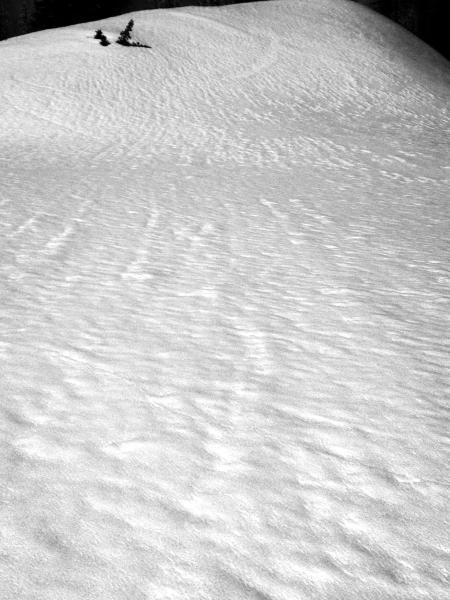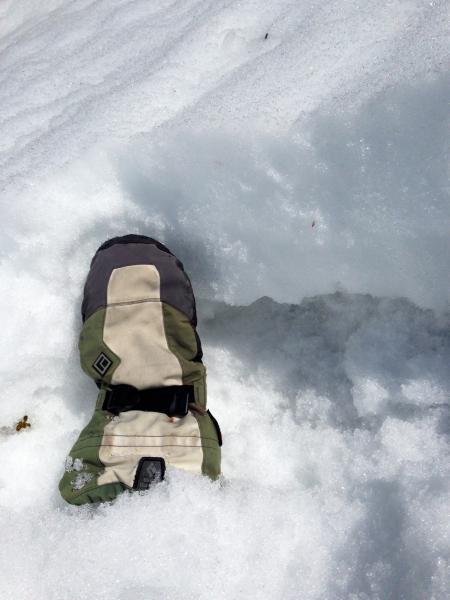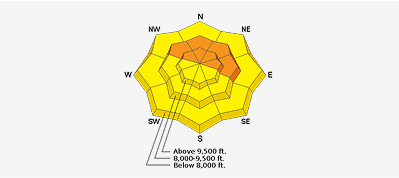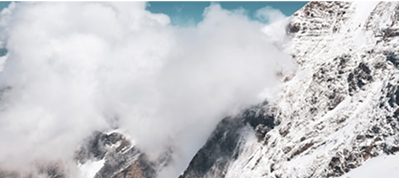Detective work, good field observations and timing can greatly increase your safety this time of year. Runnels (below) are a clue that the snowpack on this slopes has developed drainage channels, at last near the surface. This means water is draining, rather than pooling, on that slope. Wind and cloud cover are crucial - even a slight breeze can help keep the snow surface cooler. But you can loose that cooling in a hundred feet, when you drop off a ridge or change aspect, and need to be aware it's happened and avoid steep slopes if the snow is suddenly becomes much warmer and wetter.

There will be a lot of supportable crusts around in the morning - of varying thicknesses.
- Northerly facing slopes had thin breakable to up to an inch thick crusts sitting on still dry snow. The dry snow makes me think we'll get some more activity on these slopes during the next heat wave.
- Sunnier slopes had ice crusts any where from 8" thick, to only an inch thick. In many places they were above wet, loose snow, sometimes all the way to the ground in the shallower snowpack areas. This poor structure is where a person could trigger a slab avalanche as the crust starts to soften. Or trigger a wet loose slide gouging to the ground where the whole snow pack is wet and unconsolidated.
- Early starts and finishes and having lower angle options available once the snow heats up can allow for some good backcountry touring, riding or snowshoeing.
Below - 8" frozen ice crust over wet, unconsolidated fist hardness snow. Even though the snow surface is rock hard or the surface just softening, you need to figure out how thick that supportable layer is and what is beneath it.







